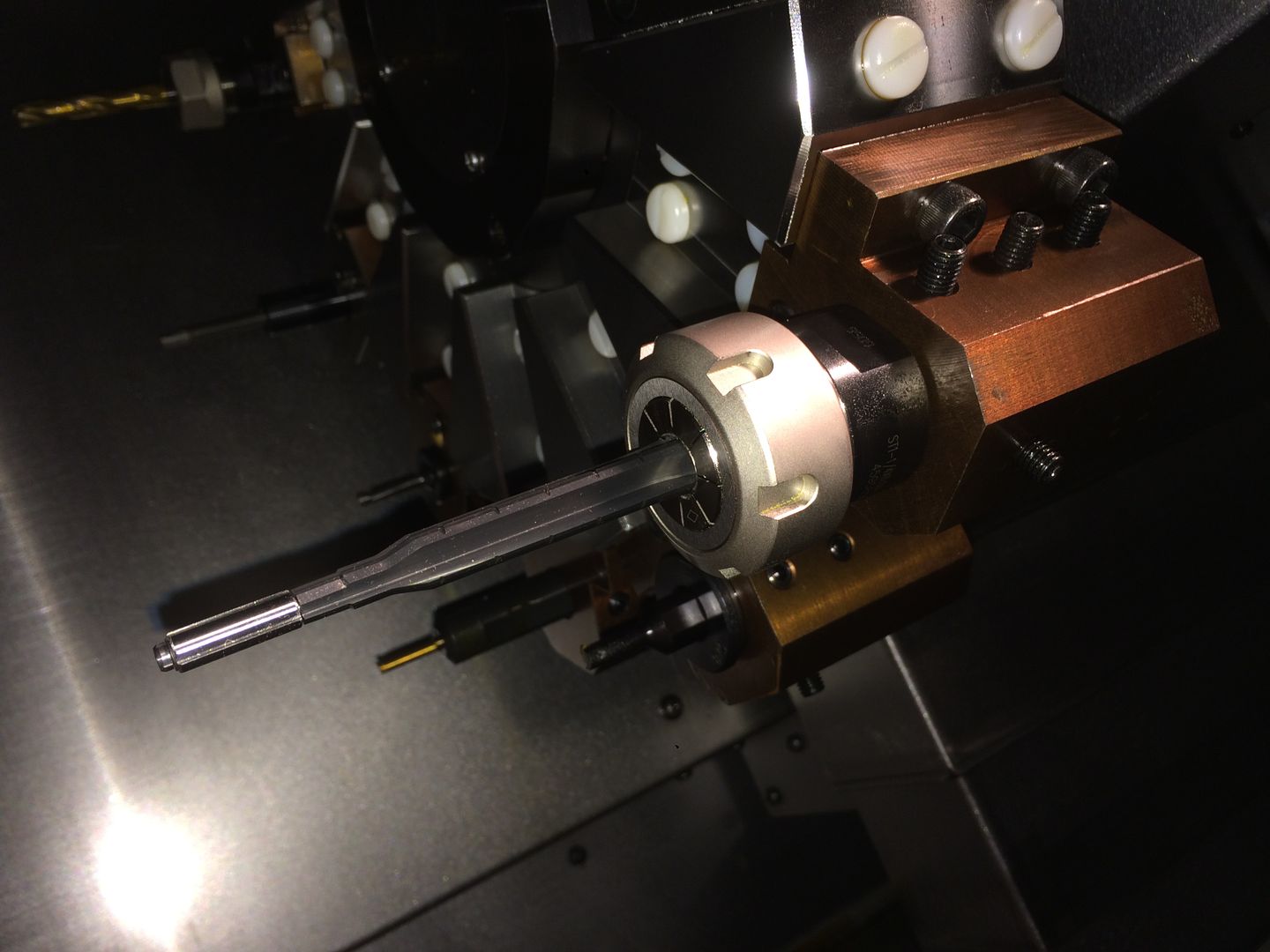imho,
just the opposite.
the reamer is following the taper bore. straight true no stress.
the bushing will try to follow the bore..which is not straight, creating stress and
attempting to pull the reamer off the intended path.
to no bushing is if you use oil through the bbl. Alot more oil goes by the reamer and keeps the chips flushed out.
I can finish the chamber in two "passes" with the reamer doing it this way. If every thing is dialed in perfectly I have seen no difference between bushing vs no bushing. Looking through the the bore scope both methods work equally well.
Richard
Can I ask if you have successfully chambered 5 grove barrels using a 6 flute reamer without the bushing?
If so what do you consider success in terms of TIR at the throat and chamber mouth?
In theory I agree that if your pre-bore is true and you get the reamer in half way you should have enough contact area to keep everything straight without the bush but so far Ive never had the confidence or spare piece of barrel to try it out myself.
Last edited:


